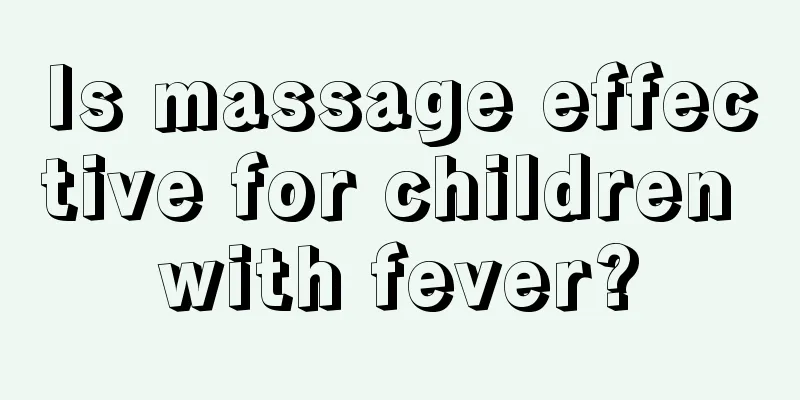What to do if a seven-year-old child has repeated fevers

|
As children grow up, they will always experience various physical discomforts, which makes some mothers very worried. The most common illness among children is cold and fever, which also makes many parents very distressed. In fact, most children’s recurring fevers are caused by bacterial infections because the children are too young and do not know how to pay attention to hygiene. However, when these problems arise, mothers should not worry too much and can try the following methods. 1. If the patient only has fever and no other abnormalities, it is still initially considered to be caused by acute upper respiratory tract infection. Currently, only symptomatic and supportive treatment is needed, such as the use of antiviral drugs such as ribavirin and shuanghuanglian oral liquid as appropriate, and antipyretics such as nimesulide for excessive fever. Fever suppositories, fever patches or physical cooling can also be used. Generally, the patient can recover, but if the fever does not subside for a long time, pneumonia, otitis media and other diseases should be considered. 2. The main symptoms of a cold are caused by a viral infection. Usually, a body temperature above 37.5 degrees is considered a fever. Don't be afraid to get an injection just because you have a slight fever. In fact, there is no specific medicine for viral infection in Western medicine. The forced use of antipyretics and anti-inflammatory injections will only increase the burden on the body's metabolism, but will not be good for the recovery of the disease. It also interferes with the body's own repair work. Therefore, people unknowingly prolong the recovery time of the disease. 3. In fact, fever is a self-protection and repair function of the human body. It is a manifestation of enhanced resistance of the human body. It is the gathering signal sent by white blood cells when they are engulfing and removing viruses, bacteria, toxins and waste in the human body. When fever occurs, the blood flow rate of the human body accelerates, which allows white blood cells to quickly gather at the patient's site, which is beneficial to the removal of viruses, bacteria, toxins and waste and speeds up their action, which is beneficial to the human body. At the same time, this activity can make the human body produce antibodies and increase the ability to resist disease in the future. The above is about how to deal with children who have a fever. It is generally better to seek medical attention in time to see what the specific cause is. If it is caused by inflammation, you can use anti-inflammatory and sterilization methods. It must be timely and do not delay the disease. Symptomatic treatment will be enough. Infusion is generally not recommended. Taking some medicine will do, unless the fever is very serious. |
<<: The child has repeated fever within one month
>>: What to do if your child keeps coughing
Recommend
Generally speaking, what should I do if my baby has bloating and diarrhea?
Diarrhea is one of the common diseases in babies....
How can we replenish calcium faster for children who are deficient in calcium?
Parents are particularly concerned about their ch...
What to do if your eight-month-old baby refuses to eat complementary food
When the baby reaches a certain age, parents will...
Do myopic children need to wear glasses?
With the development of technology, computers, te...
What to do if your baby has iron deficiency anemia
Iron deficiency anemia is a common disease, espec...
Is it okay for a baby to take a bath while sleeping?
At night, it is normal to bathe your baby before ...
Children's nails fall off
When children are playing mischievously, they may...
Why do children toss and turn in their sleep?
If a child tosses and turns in his sleep, it may ...
Children have dry stools and pass sheep feces
Nowadays, many children's stools are always d...
What is the reason why my baby coughs?
Although a baby's cough is a self-protection ...
Baby's body is cold and sweaty
Many parents will find that their babies have suc...
The best way to treat chickenpox
Most of us will be accompanied by illnesses of va...
16What are the symptoms of growing pains in adolescents?
Growing pains are a phenomenon that every teenage...
What to do if your baby has a cough and nasal congestion
When babies catch a cold, it is usually caused by...
What to do if the child still coughs after recovering from pneumonia
After a child recovers from pneumonia, he or she ...









